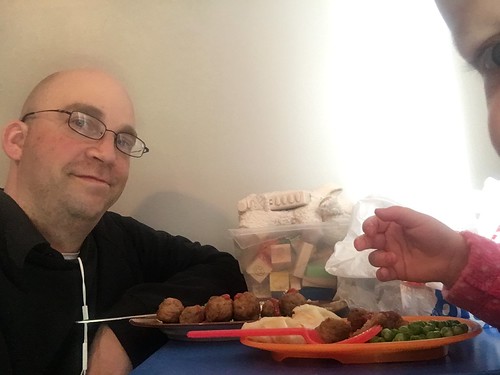that HKI, HK Localization and Glucose Fate levels of endogenous HKI and HKII are very similar in CHO cells. Glycogen-derived G-6-P mediates glucose-dependent HK inhibition We hypothesized that when HKII is overexpressed, the prolonged t1/2 of glucose clearance following a glucose pulse is related to glycogen synthesis, which occurs during the glucose pulse. Thus, when glucose is removed at the end of the pulse, the cell mobilizes the newly synthesized glycogen for glycolysis, rather than metabolizing the residual intracellular glucose. This explanation is plausible only if glycogen mobilization also inhibits HK enzymatic activity, such that the conversion of residual intracellular glucose to G-6-P is suppressed. Since glycogenolysis involves production of G-6-P, which inhibits HKs, we postulated that elevated G-6-P levels during glycogenolysis might be responsible for inhibiting HK activity, so that intracellular glucose clearance is delayed. 16632257 Consistent with this hypothesis, Fig. 3A shows after a 30 s exposure to glucose, glucose clearance upon removing extracellular glucose was rapid, and occurred at a rate similar to that observed in the absence of GLUT overexpression. However, after a 75 s exposure to 10 mM glucose, to allow more time for glycogen synthesis, glucose clearance by metabolism was delayed, occurring very slow initially, followed by rapid clearance similar to that after the short exposure to glucose. The t1/2 increased on average from 88614 s after a 30 s exposure to glucose, to 285629 s after a 75 s exposure. In contrast, exposure to 1 mM extracellular glucose for several minutes, which increased intracellular glucose level by less than half compared to 10 mM glucose, did not cause a delay in glucose metabolism. To test this hypothesis further, we imaged glycogen stores directly by using probes linking either mCherry or GFP to PTG and GL, both of which are part of the family of glycogen targeting subunits of PP-1. CHO cells were transfected with one of these probes, either with or without GLUT1 co-transfection. One day after transfection, cells were incubated for 2 to 3 hours in the absence of glucose to deplete glycogen stores. In the absence of GLUT1 overexpression, some CHO cells exhibited dim homogMarch 2011 | Volume 6 | Issue 3 | e17674 HK Localization and Glucose Fate enous fluorescence, while others had a few small and bright punctuate deposits. After re-addition of glucose for 300 min, the number, size and brightness of small glycogen deposits began to increase. This phenomenon intensified over 24 hrs, until the deposits fused and partially filled the cell. After a two hour exposure, removal of glucose resulted in a rapid disappearance of glycogen deposits. With 193022-04-7 overexpression of GLUT1, the rate of appearance of glycogen dramatically increased, such that small deposits were observed within a few minutes of exposure to  10 mM glucose. Thus, in CHO cells overexpressing GLUT1, the rates of glycogen synthesis and depletion are rapid enough to plausibly support our hypothesis that relatively short glucose pulses could induce enough glycogen synthesis to progressively delay the t1/2 of glucose clearance following glucose removal. The effects of PTG overexpression on the t1/2 of glucose clearance following glucose removal are shown in Fig. 5. In CHO cells transfected with PTG alone, PTG had no effect on the t1/2 of glucose clearance, even after prolonged exposure to glucose, which we attributed to intracellular glucose n
10 mM glucose. Thus, in CHO cells overexpressing GLUT1, the rates of glycogen synthesis and depletion are rapid enough to plausibly support our hypothesis that relatively short glucose pulses could induce enough glycogen synthesis to progressively delay the t1/2 of glucose clearance following glucose removal. The effects of PTG overexpression on the t1/2 of glucose clearance following glucose removal are shown in Fig. 5. In CHO cells transfected with PTG alone, PTG had no effect on the t1/2 of glucose clearance, even after prolonged exposure to glucose, which we attributed to intracellular glucose n
